Wetland Birds: Iconic Species Guide
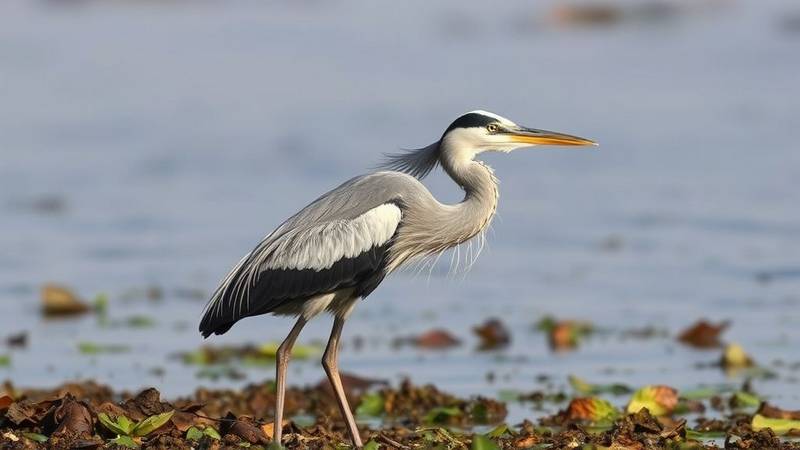
Wetland birds, from majestic herons to elegant grebes, are true jewels of biodiversity. Adapted to diverse inland aquatic environments, they play a crucial role in the balance of these fragile ecosystems. Their variety of forms and behaviors reflects their unique strategies for finding food and shelter in marshes, ponds, lakes, and rivers.
Discover the SpeciesPage Contents
Our 10 Iconic Wetland Species
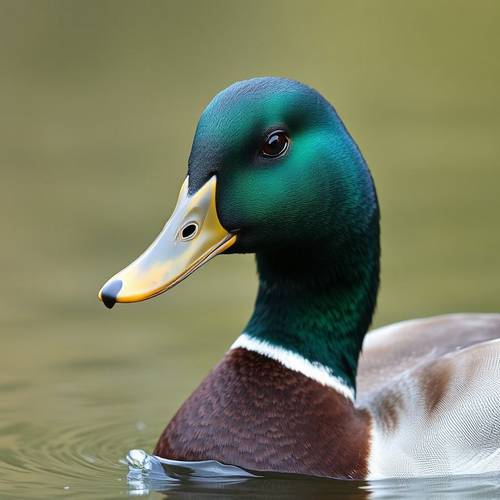
Mallard
The most common dabbling duck, recognizable by the male's vibrant green head. It feeds by dabbling, tail-up, in shallow waters.

Grey Heron
An elegant, solitary wading bird, often motionless as it waits for prey. Its flight is slow, with steady wingbeats and its neck folded in an "S" shape.

White Stork
An emblematic long-distance migrant, often nesting on rooftops or pylons. It feeds on insects, amphibians, and small mammals.
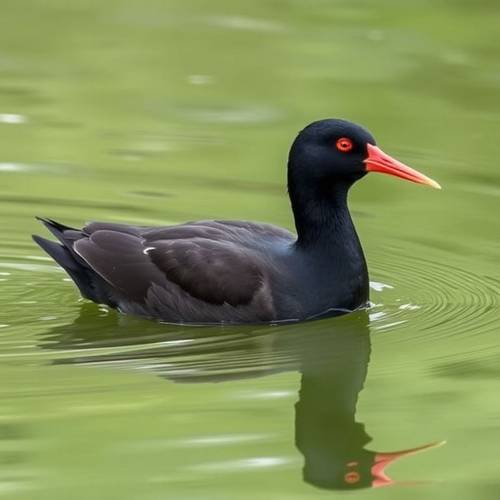
Common Moorhen
A discreet but common bird found along the edges of ponds and ditches. Recognizable by its dark plumage, red beak, and red frontal shield.

Eurasian Coot
An all-black aquatic bird with a distinctive white frontal shield. It's an excellent diver, frequently seen on inland water bodies.

Great Crested Grebe
An elegant diving bird with a double crest and a rufous-black ruff during breeding season. Famous for its elaborate aquatic courtship display.
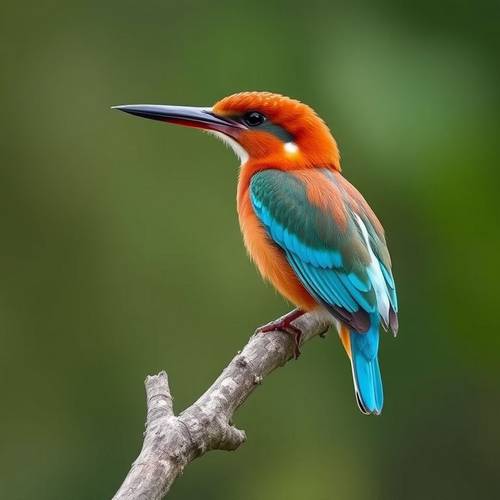
Common Kingfisher
A small bird with dazzling colors, a flash of blue and orange along rivers. It fishes by diving headfirst to catch small fish.
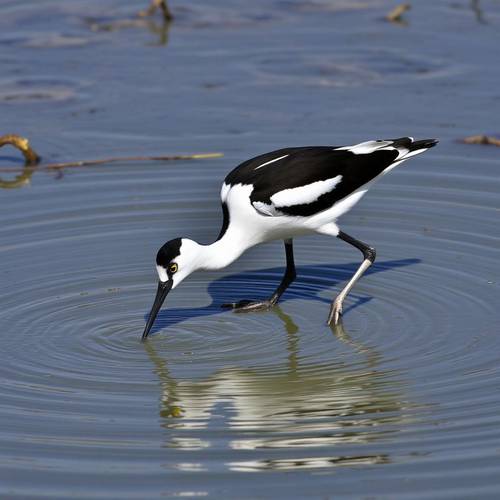
Pied Avocet
A beautiful black and white wader with a long, thin, upturned bill. It feeds by sweeping its bill through the water in search of small invertebrates.
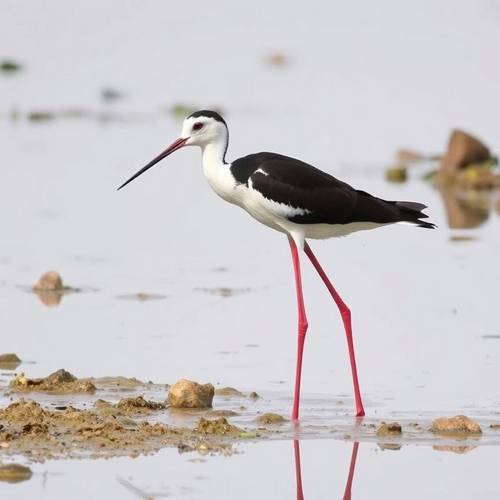
Black-winged Stilt
A bird with incredibly long, slender legs, like stilts, and contrasting black and white plumage. It moves gracefully in shallow waters.
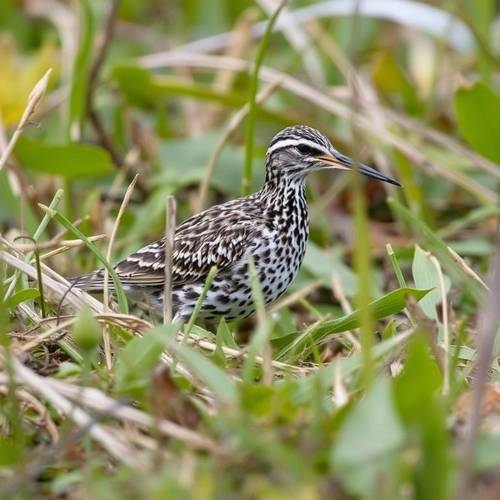
Common Snipe
A master of camouflage, this wader has a very long bill which it uses to probe mud for invertebrates. Known for its rapid, zigzagging flight.
Explore All Our Wetland Bird Guides
In addition to our 10 iconic species, our site covers many other birds that inhabit ponds, lakes, and marshes. Access all our detailed identification guides below.
📚 Our 20 Moderately Common Species (Intermediate Level ⭐⭐)
Mastered the classics? Learn to identify these regular but more discreet or seasonal species.
🦆 Diving Ducks and Waterfowl (6 species)
🦩 Herons and Waders (5 species)
🦜 Shorebirds and Long-Billed Waders (5 species)
🐦 Rails, Grebes, and Other Aquatic Species (4 species)
💡 Tip: These 20 species are ideal for progressing after mastering the 10 iconic species. They require a sharper eye but remain regularly observable with patience.
🔬 Rare and Specialized Species (Expert Level ⭐⭐⭐)
For advanced observers, we are developing guides dedicated to rare, threatened, or uniquely behaved species. These birds require expertise, patience, and sometimes travel to specific sites.
✅ Expert Guides Available
🔜 Expert Guides in Preparation (17 species)
These guides will be published soon. Each sheet will include: history of observations in the region, best observation sites, reporting protocols, and conservation issues.
🦆 Rare Ducks and Waterfowl
- Ferruginous Duck – Endangered diving duck, exceptional sighting.
- White-headed Duck – Critically endangered species, fewer than 100 individuals in Europe.
- Marbled Duck – Rare small teal of Mediterranean wetlands.
- Red-crested Pochard – Elegant duck, expanding range but still uncommon.
- Common Eider – Occasional marine duck on the coasts.
🦩 Rare Herons and Ardeidae
- Squacco Heron – Small Mediterranean heron with golden plumage in breeding season.
- Purple Heron – Rare breeder in large reed beds.
- Western Reef Heron – Accidental visitor, historic observation.
🦜 Rare Shorebirds
- Curlew Sandpiper – Very rare Arctic passage wader.
- Ruff – Wader with extreme dimorphism, threatened migrant.
- Marsh Sandpiper – Rare wader of stagnant waters.
- Bar-tailed Godwit – Migratory wader with a slightly upturned long bill.
🐦 Rare Rails, Grebes, and Others
- Spotted Crake – Discreet rail of temporary marshes.
- Red-necked Grebe – Small grebe, rare winter visitor on large lakes.
- Slavonian Grebe – Exceptional Nordic visitor, spectacular plumage.
- Whiskered Tern – Small freshwater marsh tern, rare breeder.
- Glossy Ibis – Wader with a long curved bill, recently expanding.
Defining Wetland Birds and Their Role
Wetland birds are avian species specifically adapted to life in inland or coastal freshwater/brackish aquatic environments. Their key adaptations include:
- Specialized Anatomy: Long legs for waders (herons, storks) or webbed feet for swimmers (ducks, coots), bills adapted for catching fish, invertebrates, or filtering.
- Movement Capabilities: Excellent swimmers and divers, capable of long-distance flight, or discreet movement through dense vegetation.
- Diverse Diet: Ranging from fish, amphibians, aquatic insects, mollusks, to seeds and vegetation.
- Reproduction: Nests often built near or on water, within dense vegetation or on floating platforms, to protect their young.
These birds are valuable indicators of wetland health, unfortunately threatened by urbanization, agricultural pollution, and drainage.
Adaptations and Unique Traits of Aquatic Species
Aquatic bird species are distinguished by several remarkable adaptations:
- Adapted Feet: Either long and slender for wading (waders), or webbed for swimming and diving (ducks, grebes).
- Waterproof Plumage: Often feature well-developed uropygial glands for waterproofing their feathers, essential for staying dry.
- Hunting Techniques: Highly diverse: ambush fishing (herons), plunge-diving (kingfishers, grebes), filtering (ducks), probing mud (waders).
- Camouflage: Many sport cryptic plumage, especially species living in reed beds, to blend into their environment.
- Ecological Role: They contribute to seed dispersal, regulation of insect populations, and are essential links in aquatic food chains.
Habitats of Aquatic Birds: Diversity and Specifics
The habitats of aquatic birds are incredibly rich, extending from small ditches to vast river deltas:
- Ponds and Small Lakes: Small water bodies rich in vegetation, favored by Common Moorhens, Eurasian Coots, and some ducks.
- Rivers and Streams: Flowing waters where one can encounter Kingfishers or Wagtails.
- Marshes and Reed Beds: Dense and complex environments, refuges for herons, bitterns, and rails.
- Large Lakes and Reservoirs: Offer vast expanses of water for grebes, large groups of ducks, and sometimes migratory birds.
- Estuaries and Lagoons: Transitional zones between fresh and saltwater, popular with waders (avocets, stilts) and certain ducks.
Our Wetland Enthusiast Tip
Observing wetland birds is a rewarding experience, but it requires patience and discretion. These environments are often fragile, and their inhabitants are sensitive to disturbance. To maximize your chances and fully enjoy the spectacle, patience is your best ally!
The tip that works wonders: find an observation post (hide, blind, or simply a discreet and quiet spot), settle in comfortably, and wait. Let the environment live around you. Herons will reappear, ducks will emerge from the vegetation, and perhaps you'll be lucky enough to spot a Kingfisher in a flash of blue. The key is to become one with the environment without disturbing it.
Our 5 Key Tips for Observing Wetland Birds:
- Prioritize Calm: Wetlands are sensitive environments. Walk softly, speak in a low voice, and avoid sudden movements.
- Use Binoculars and a Scope: Many species are shy or keep their distance. Good optical equipment is essential.
- Look for Hides and Observatories: Many natural sites are equipped for discreet observation, offering the best views without disturbing the birds.
- Identify the Vegetation: Reed beds, aquatic plants, and dead trees are key habitats for different species. Learning to recognize them will help you know where to look.
- Watch for Signs: Calls, footprints in the mud, or ripples on the water surface can indicate the presence of birds even if they are hidden.
Diet and Hunting Strategies
The diet of wetland birds is as varied as the species themselves, reflecting their unique adaptations:
- Piscivores: Herons, kingfishers, grebes catch fish and amphibians.
- Insectivores: Many waders (snipes, redshanks) probe mud for larvae and aquatic invertebrates.
- Herbivores/Granivores: Dabbling ducks consume seeds, aquatic plants, and small invertebrates.
- Omnivores: Moorhens and coots have a mixed diet, including vegetation, invertebrates, and sometimes small fish.
Water quality and the abundance of invertebrates are crucial for their survival, and aquatic pollution poses a direct threat.
Migration: Crucial Journeys for These Species
Many wetland species are migrants, undertaking annual journeys of thousands of kilometers between their breeding and wintering grounds:
- Importance of Stopovers: Wetlands serve as vital stopovers on migratory routes, offering food and rest to exhausted birds (e.g., many waders, waterfowl).
- Nocturnal Travelers: Many migrate at night to avoid predators and benefit from cooler temperatures.
- Modern Challenges: Habitat loss along migration corridors, climate change altering timings and resources, and hunting are major challenges.
Protecting these environments is essential for the survival of these long-distance travelers.